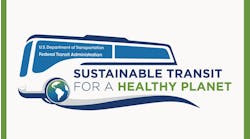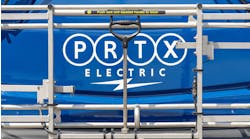As cities and states recognize the need to expand their mass transit options, the realization of limited funding will create the need for alternative and creative methods to develop and finance mass transit projects. In areas with existing mass transit infrastructure, upgrades will continue to be addressed much as they are today; however, for cities that are interested in beginning “new start” projects, or for states working toward intercity high speed rail lines that do not exist today, a different approach to financing and implementing these projects exists.
This alternative method of financing and implementing new mass transit projects is accomplished through Public Private Partnerships, or PPP, with the technical support of a Transportation Solution provider. In these situations, a Transportation Solutions provider, or system integrator, would lead a team of partner companies in the creation of a complete turnkey system, including the design, build, operation and maintenance (DBOM), which would then be financed through a mix of public and private investments. This option presents the creative solution required to solve cities’ and states’ mass transit needs, both from the project development and financing aspects.
Through the use of PPP and Transportation Solutions providers, it is possible to rebalance the U.S. transportation network to provide Americans with cost-effective, environmentally-friendly transportation options. Ultimately, when it comes to rebalancing the transportation network, the best solution to address mass transit needs is directly related to the length, physical terrain and capacity needs for any given commute. For example, in a rebalanced transportation network, high speed rail lines would best serve intercity travel in the range of 100-600 miles. This is contrary to today, where air travel and automobiles are the primary options for such a journey in the U.S.
Another example of rebalancing is present in communities that need to bolster inner city transit over short distances and do not currently have major mass transit infrastructure in place. Here, installing a new light rail or streetcar system could be an ideal solution. For travel within cities, streetcar systems are an increasingly attractive option. Their primary purpose is to transport people within a specific area in a highly efficient, cost-effective and environmentally friendly manner. These new installations are a perfect example where opportunities for turnkey solutions are ideal to implement the system.
Transportation Solutions providers using a PPP approach would also benefit the implementation of new high speed rail lines. With the results from the November elections, the focus on high speed rail will become narrower and target corridors that have the majority of the financial backing and an overwhelming consumer need or prominent business case. The North East Corridor, for example, is highly travelled and is located in one of the most densely populated areas of the country. It aims to increase the system speed and to address PTC compliance.
In the state of Florida, a new transportation alternative is needed to alleviate congestion along the highway system between Tampa and Orlando. Here, a high speed rail system with a connection to the Orlando airport is important and will address the 2.4 million travelers that are projected to use the line in its first year. Private firms will be asked to submit bids to complete the design of the system, then build, operate and maintain it. The Florida Department of Transportation’s goal is to secure firm construction bids and have the private sector cover operating costs. The DesertXpress high speed line, which is to run from Las Vegas, NV to Victorville, CA, is another example of a project using the PPP approach. It is partially financed by a local businessman with the balance expected to be financed through a federal loan.




